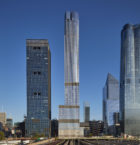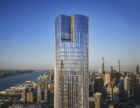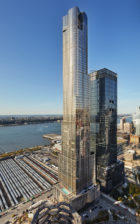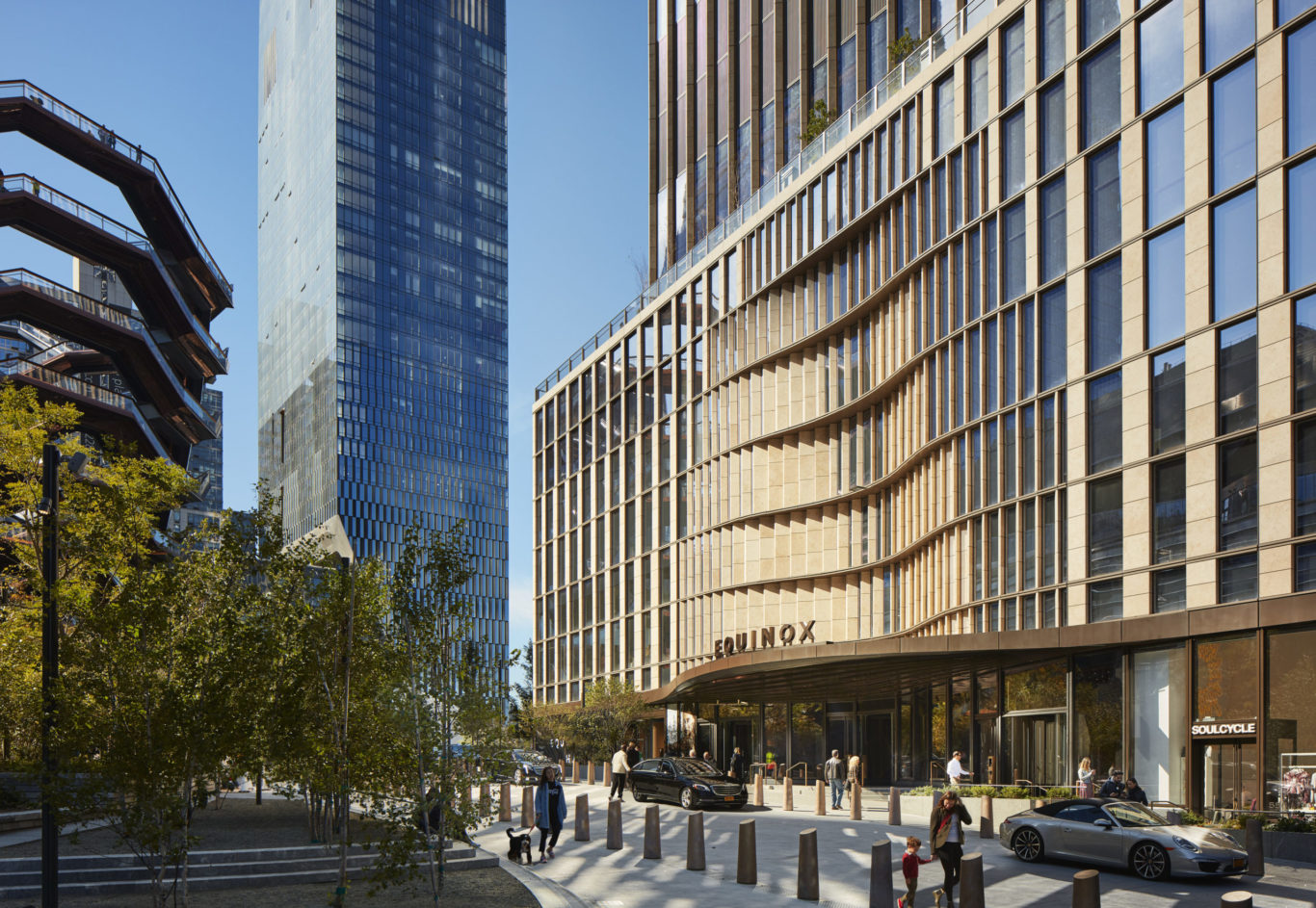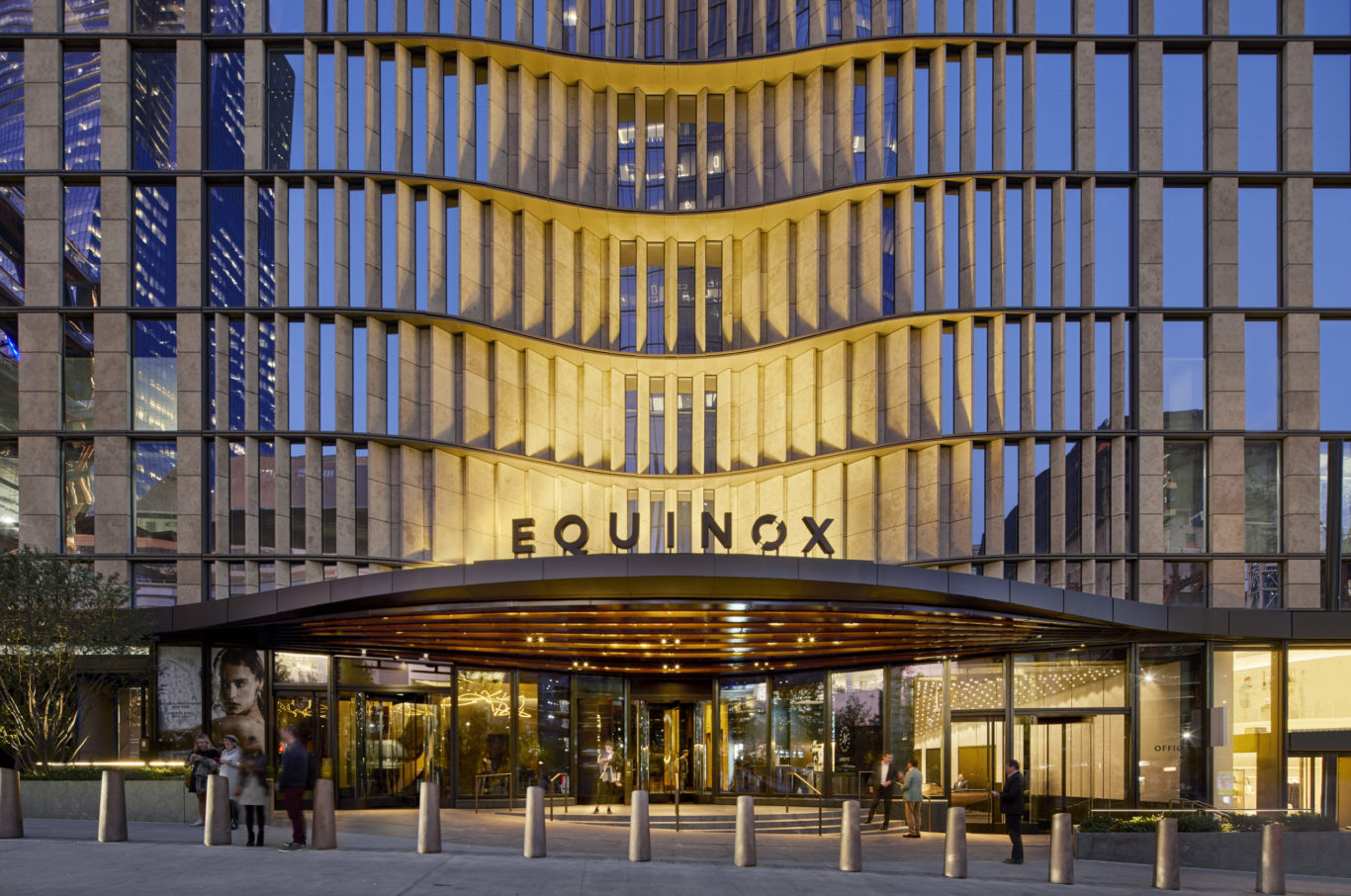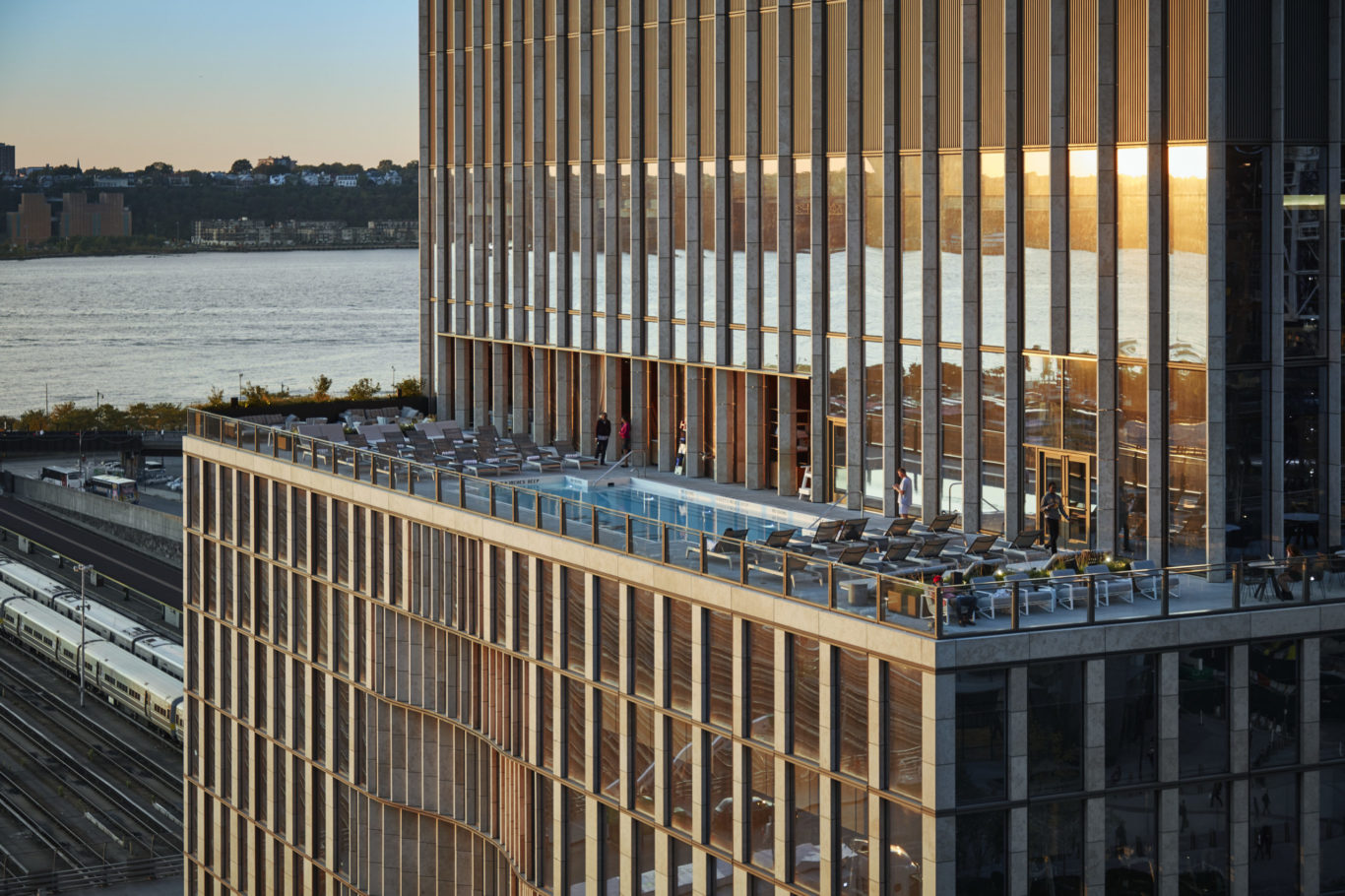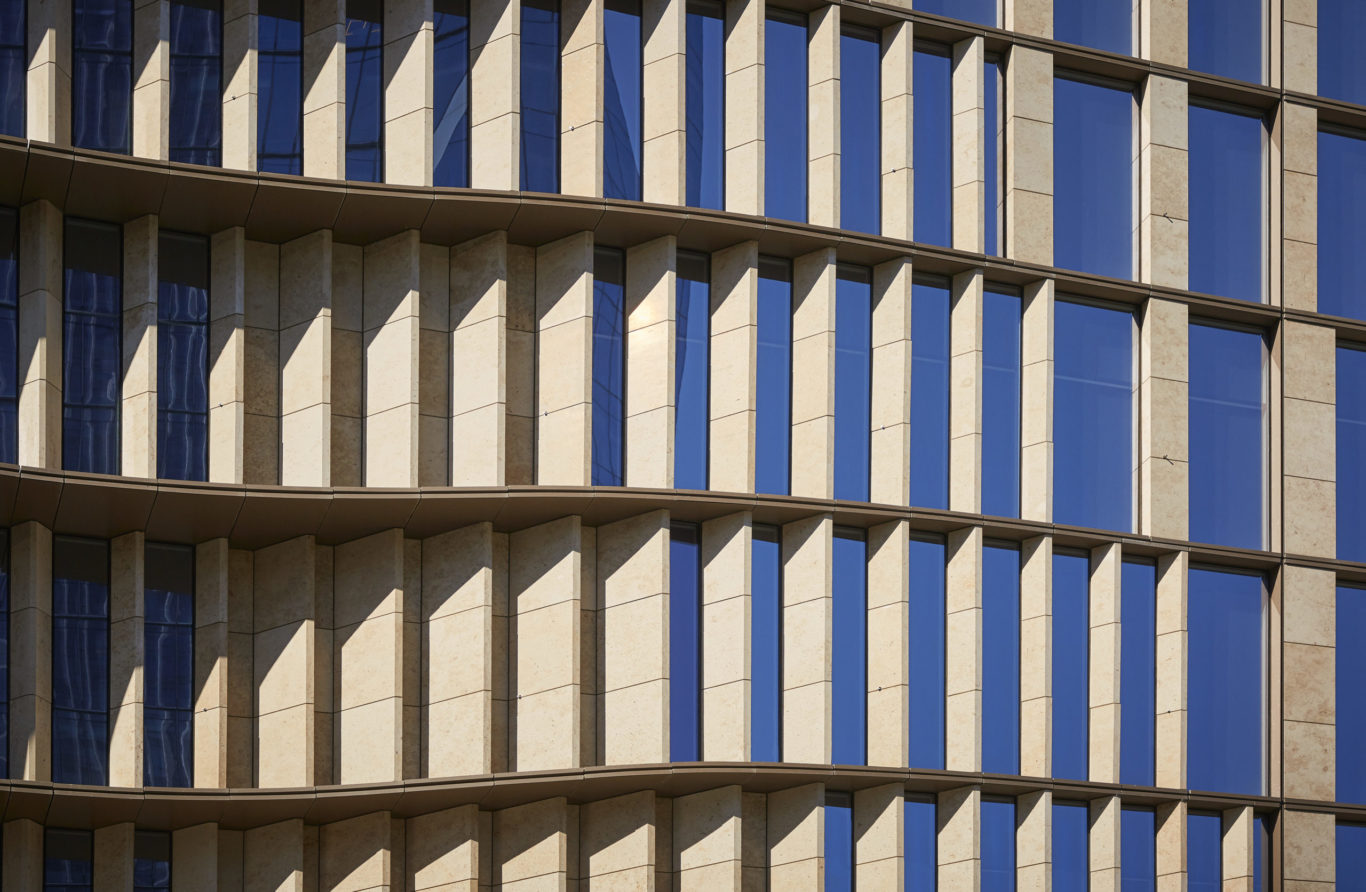A centerpiece for a new neighborhood
Hudson Yards is the largest private real estate development in the history of the United States, and the largest development in New York City since Rockefeller Center was built in the 1930s. This six-block area on Manhattan’s West Side, comprising 28 acres over active railroad tracks and tunnels, reimagines a formerly underdeveloped part of the city into a residential and commercial district with new open space. At the heart of this neighborhood is 35 Hudson Yards, a mixed-use tower designed by SOM.
